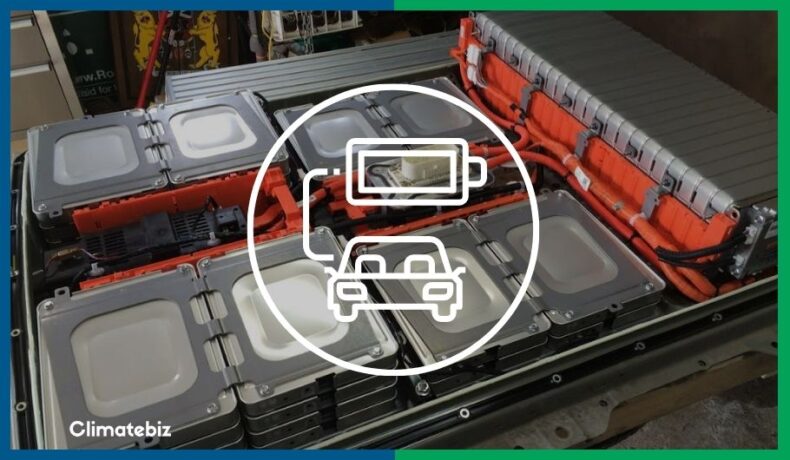The Nissan Leaf battery has come leaps and bounds from its original build. But the battery is only one significant aspect of this electric vehicle.
This EV comes with next-level intelligence that analyzes the driver’s habits, thousands of charging points nationwide, versatile charging options — the list goes on.
And if that isn’t enough, the Nissan Leaf is almost entirely made of recyclable material!
But as much as we can sit and list why this electric vehicle is one of the best out there, it’s probably time to zoom in a little more and look at the core component that allows you to zip around town — the battery.
This article will take you through what the battery is about, what to expect from it, and how you can best take care of it.
Table of Contents
The Nissan Leaf Battery
An electric vehicle comprises numerous parts, one of which is the battery.
Understanding how an electric car battery works will allow you to understand your car better and get the most out of it!
Now, let’s look at what the Nissan Leaf battery is all about.
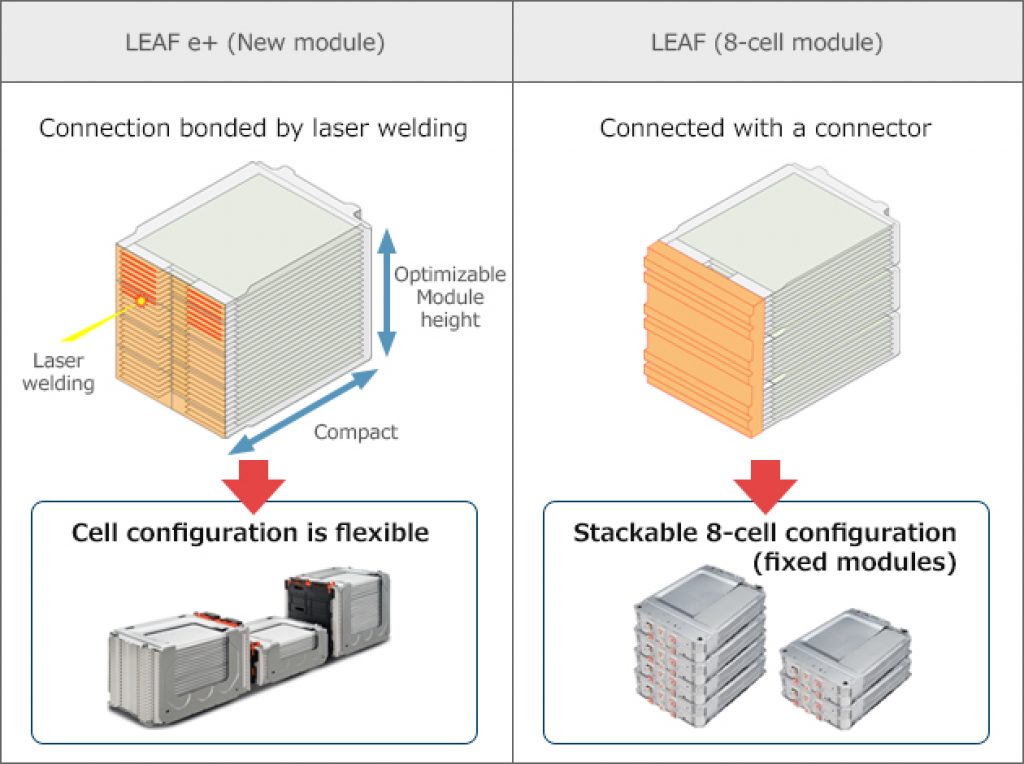
Source: Nissan
The Nissan Leaf battery has come leaps and bounds from its original big unit.
The cell structure within the battery is laminated and has been designed with a Ni-Co-Mn positive material. Moreover, the cells are high-performance and have a high cooling level ability which is great for battery life.
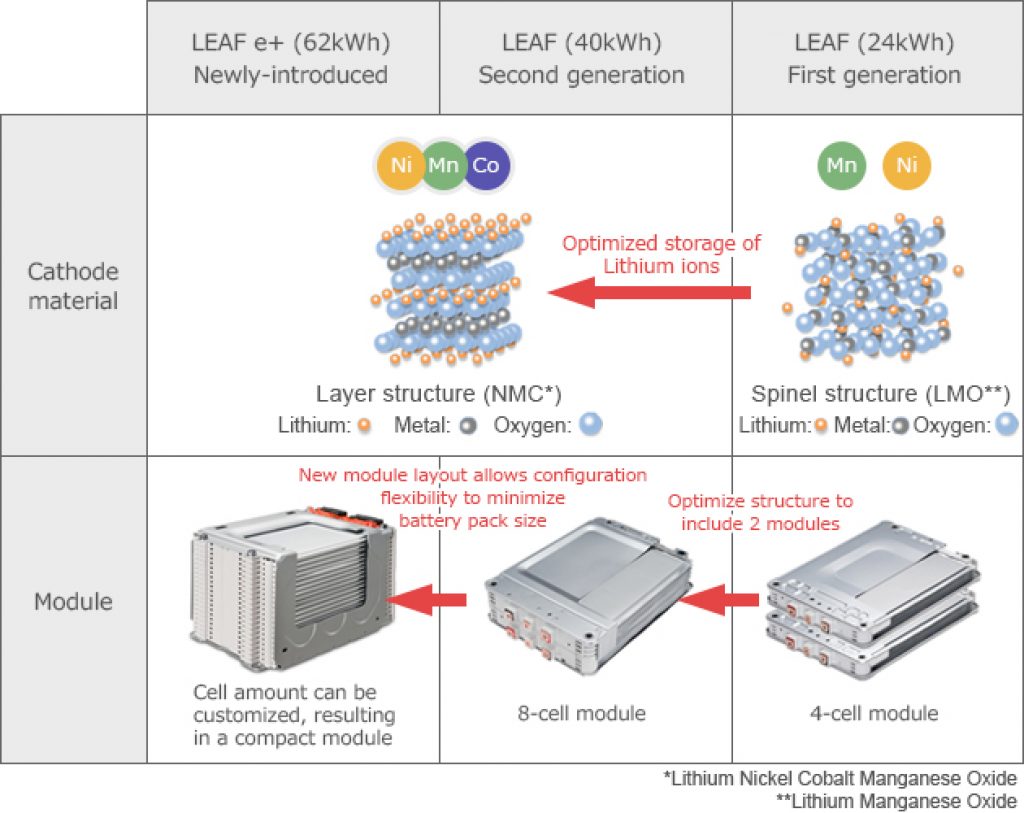
Source: Nissan
When the initial battery launched, it was made of 48 modules in a 4-cell configuration. Today you will find that the battery is designed in an 8-cell configuration.
The new lithium-ion battery makes for a much smaller unit and higher density of lithium ions.
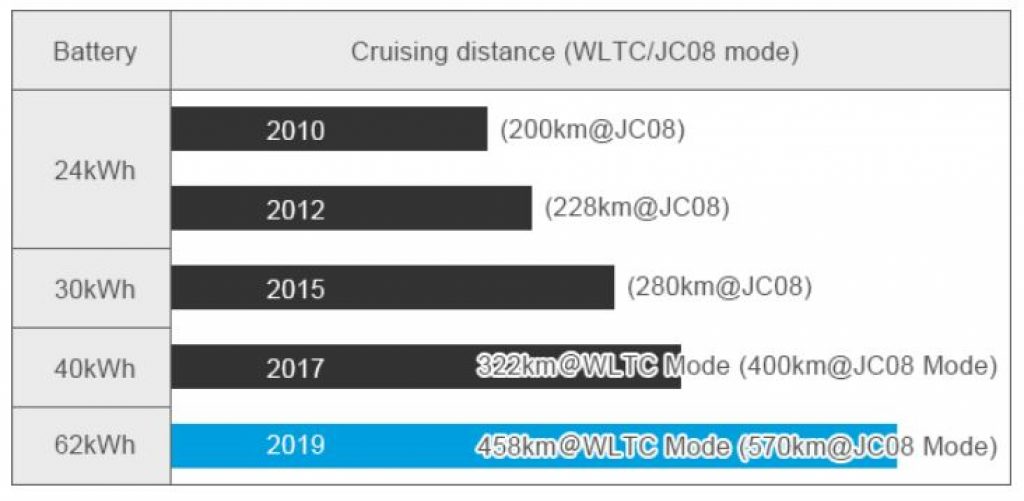
Source: Nissan
What Size Is A Nissan Leaf Battery?
We can interpret battery size in two different ways.
The first is the battery’s physical size, and the second refers to the size in terms of capacity.
Physical Size
Looking at the size of a Nissan Leaf battery isn’t the battery itself but rather each battery cell.
The average cell is 10.26 inches in length, 8.5 inches in width, and has a 0.31-inch thickness.
You can expect a 914-gram weight per cell.

Source: InsideEVs
Size In Terms Of Capacity
When measuring size in terms of capacity, you will look at a kWh measurement.
These differ among the various Nissan Leaf model types and are as follows:
| Nissan Leaf Model Type | Battery Size (Capacity) |
|---|---|
| Nissan Leaf S | 40 kWh |
| Nissan Leaf SV | 40 kWh |
| Nisan Leaf S Plus | 62 kWh |
| Nissan Leaf SV Plus | 62 kWh |
| Nissan Leaf SL Plus | 62 kWh |
The Nissan Leaf S and Leaf SV have a capacity size of 40 kWh.
The Nissan Leaf S Plus, SV Plus, and SL Plus have a robust 62 kWh capacity.
Cost Of A New Nissan Leaf Battery
According to various reports, including a forecast by the Bloomberg New Energy Finance, the lithium batteries used by the Nissan Leaf can cost you an estimated $6000.
However, the battery unit (without installation cost) comes to around $4000.
This is all dependent on the type of battery package you are looking to buy. However, global finance forecasts estimate that you will pay around $137 per kilowatt of battery capacity.
In other words, if you are looking at a 40kWh battery, you can expect to pay $5 500.
Dealerships vary in price, so the best advice is to get a few quotes from various dealerships in your area.
What Is The Lifespan Of A Nissan Leaf Battery?
By now, we’re sure you’re aware that the Nissan Leaf is one of the top small electric cars to own, but how much do you know about its battery life?
According to Nissan, a Leaf battery will typically last you around ten solid years!
That being said, your battery’s state of health largely depends on the type and size of battery you have, your driving style, and the conditions in which you drive.
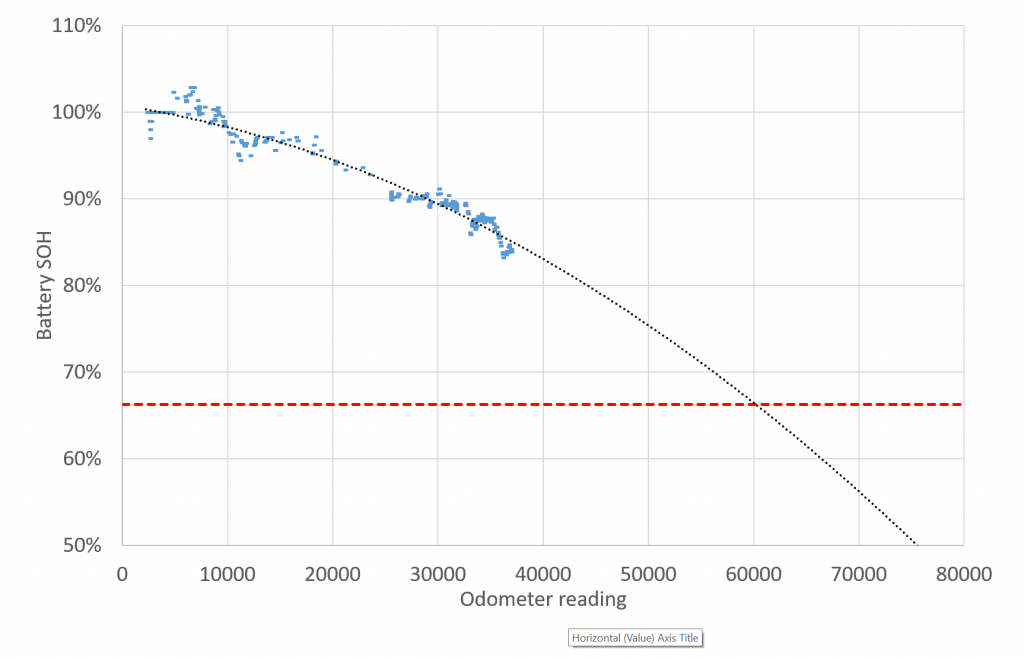
Source: Reddit
Size: a bigger battery will have more capacity as there are more cells your electric car can rely on.
Driving style: a smoother driving style puts less pressure and demand on your generated energy, thus preserving what is essential.
Driving conditions: driving in rough conditions will undoubtedly demand more from your battery. If this is a daily occurrence, your battery won’t last quite as long as an unstrained battery.
But before you start stressing about your battery life being cut short, we have good news. You can take a few steps to make the best out of what you have!
How To Extend Your Nissan Leafs Battery Life
Battery capacity decreases over time, and the range you’ll be able to drive will decrease too. This is pretty normal and to be expected.
But is there a way to slow the process down a little?
As the saying goes, “the devil is in the details.” This certainly rings true when extending the Nissan Leaf’s battery life. It’s all about the habits, routines, and small actions that you take.
Here are a few tips:
Before Your Drive
- Ensure your Nissan Leaf receives regular maintenance.
- Check that your tire pressure is in line with the recommendations.
- Keep your wheel alignment up to date.
- Remove all unnecessary baggage and cargo from your car.
- Try utilizing your home charging method as much as possible and avoid supercharging as much as you can.
- Pre-heat or pre-cool your car’s interior before heading off on a trip.
During Your Drive
- Prevent high battery temperatures as much as possible.
- Use your Nissan Leaf’s ECO mode where possible and keep to moderate driving speeds.
- Ensure that you accelerate gradually and not in a jerking fashion.
- Keep your air conditioning system off when it isn’t needed.
- Keep your windows closed where possible to reduce drag and battery energy consumption.
- Use brakes only when necessary. You can release your accelerator to slow your car down.
General Tips
- Avoid storing your Nissan Leaf in a unit colder than -13°F for longer than a week.
- Avoid exposing your Nissan Leaf to extreme temperatures (hot or cold) for long periods.
- If your battery charge is very low or completely depleted, avoid leaving it in that state for longer than two weeks.
- Ensure your EV is parked in a cool place out of direct high sun exposure where possible.
- Before charging your Nissan Leaf, allow its battery to cool down completely.
- Start your Nissan Leaf regularly.
- Be sure to clean out the battery terminals and any form of corrosion using a specialized cleaning solution with a wire brush.
Extending your Nissan Leaf’s battery life will have you maintain a better overall range over time!

Source: InsideEVs
How To Get Your Nissan Leaf Battery Replaced
If you buy your Nissan Leaf from a Nissan USA dealership, you’re lucky enough to have a limited battery replacement warranty.
This warranty covers your genuine Nissan 12V battery, including any defects and the cost of workmanship.
The Nissan warranty applies if your battery becomes unserviceable within the first two years of service. Thereafter, Nissan provides you with a reduced price for a replacement for up to 84 months.
Unfortunately, damage, routine maintenance and service, salvage title vehicles, environmental impacts, and modified vehicles do not qualify got this warranty.
Now let’s look at replacement outside of a warranty.
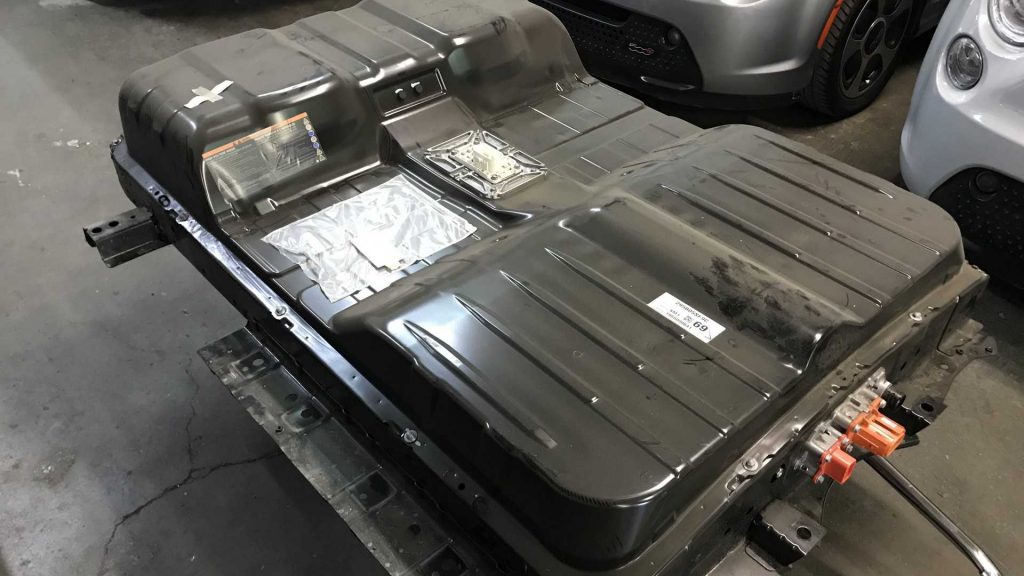
Source: InsideEVs
Getting Your Nissan Leaf Battery Replaced Commercially
The time will come when your battery needs replacing.
If you want to have your Nissan Leaf battery replaced by a professional, you’ll have to go to a Nissan dealership or a certified battery replacement specialist.
There are many places to choose from, and if you are part of the Leaf community, you might have come across the community list!
Replacing Your Nissan Leaf Battery Yourself
Perhaps you’re more of a do-it-yourself person and have a knack for mechanic-type activities! Then this section may be for you.
Replacing a battery yourself can be a pretty tricky task, and because of this, most batteries are difficult to access.
To change your Nissan Leaf’s battery, you should start by grabbing your owner’s manual, where you will find in-depth information on where your battery is located.
The following steps are given by Nalley Nissan of Cumming:
- Start by making sure your engine is completely turned off and look to your owner’s manual to locate the car’s battery.
- Using a wrench, loosen the bolt holding the black negative battery cable ever so slightly.
- You can carefully remove the cable by twisting it and pulling gently — under NO circumstances should you apply force or use a metal object to remove the cable away from the battery.
- Repeat this process for the red positive battery cable (steps 2 & 3).
- You can then identify the clamp holding the battery in place. Please take note that it is quite heavy!
- You can now easily remove the battery.
- Using a wire brush and the correct battery cleaning solution, you can clean any corrosion off the cables. You should also clean the battery tray.
- To install a new battery, repeat the steps listed above and reconnect.
Final Thoughts
We can all agree on one thing — the Nissan Leaf battery packs a punch!
It’s readily available from your closest dealership or around the corner at a registered battery specialist in your city or town.
Unfortunately, all good things must come to an end, including the battery. Thankfully, you can expect at least a decade of pretty decent power and range from your EV.
Being mindful of your habits will help stretch your Nissan Leaf’s battery life a little longer. After all, taking care of something you greatly value will bring you great value!
If you want to share your thoughts or ask us a question, please feel free to reach out to us in the comments section below! Alternatively, visit our forum and share your opinions with us!

